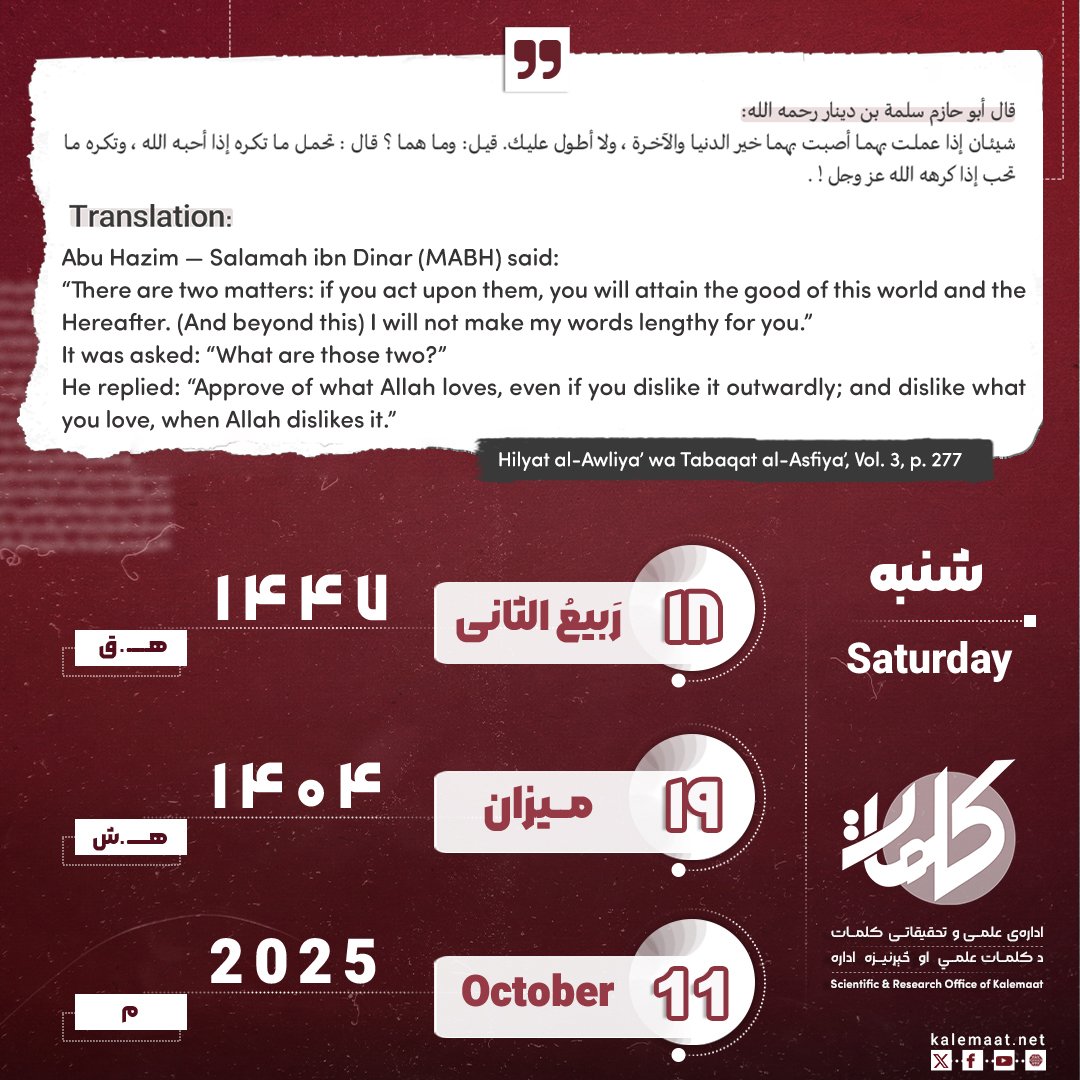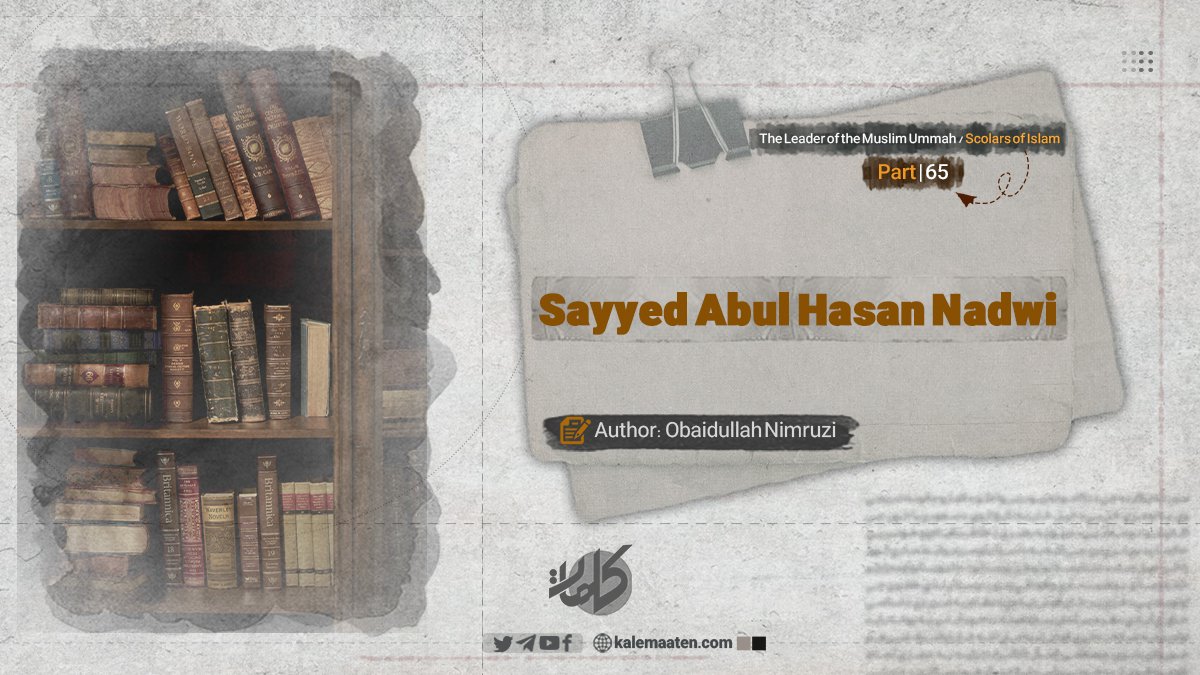Author: Obaidullah Nimruzi
Allama Sayyed Abul Hasan Nadwi ‘May Allah have mercy on him’ (Part 65)
In the Embrace of the Revolutionary Mawlana Muhammad Elyas Kandhlawi (MAPH)
The transformative impact of the company and companionship of the pious and enlightened saints of Allah is undeniable—a firmly established and evident truth. The gaze of the people of Allah and the chosen one of Allah is an arrow that always hits its mark:
“The key to the treasure of happiness is the acceptance of the people of the heart.
Let there be no doubt or hesitation in this truth.
A shepherd in the valley of Sinai may attain his desire,
If he serves Shoaib with devotion for years.”
Although Allama Nadwi (MAPH), before meeting the great caller of the Ummah and the enlightened Gnostic, Mawlana Muhammad Elyas Kandhlawi (MAPH), had already achieved a high rank in knowledge, wisdom, authorship, and various fields, the impact of Mawlana Ilyas’s companionship brought about a profound transformation in him. From the very beginning of his life, he was deeply concerned about the condition of the Ummah and strove to revive its spirit. However, his efforts were limited and constrained.
When Allama Nadwi (MAPH) entered the presence of Mawlana Muhammad Elyas (MAPH) and benefitted from his states and spiritual condition, an indescribable force emerged within him. This meeting transformed him from a small stream into a vast ocean, from a limited individual into a global personality. This remarkable transformation was the result of the revolutionary and spiritually captivating companionship of Mawlana Muhammad Elyas (MAPH):
“The journey of love is long and distant, yet
A sigh sometimes covers the road of a hundred years.
Do not let go of the hope of seeking.
There is a fortune that one may find on the path someday.”
Upon entering the blessed presence of this righteous preacher, Mawlana Ilyas (MAPH), it was as if Allama Nadwi (MAPH) had rediscovered a long-lost treasure. He wholeheartedly devoted himself to this path with boundless passion and fervor. The spiritual warmth and inner agony of Mawlana Ilyas (MAPH) were so compelling that anyone who came into his presence inevitably absorbed some of it. He was an alchemist who revived despondent hearts and filled silent souls with zeal and ardor.
Dr. Abdullah Abbas Nadwi (MAPH) writes in his book Mir Karavan:
“This humble servant and other friends noticed a significant change in Allama Nadwi (MAPH) when he established a connection with Mawlana Muhammad Elyas (MAPH). It was as if a divine inspiration had been whispered into his ear.”
“How long will you sit at the door of the school, Hafiz?
Rise, so we may seek an opening at the door of the tavern.”
Before this meeting, Mawlana Nadwi (MAPH) had already been contemplating the revival of the Ummah. However, when he saw another distressed soul striving on the righteous path with a new order and harmonious discipline, his resolve and determination grew stronger. The sight of the Meo people’s disciplined and structured efforts in the service of faith further amplified the influence of Mawlana Elyas (MAPH) in his heart.
Mawlana Nadwi (MAPH) writes about the Mewat region: “During this journey, the most astonishing sight, which brought me continuous joy and happiness, was the preaching system of Mawlana Elyas (MAPH) in Mewat. What I witnessed was not a vision of the twentieth century; rather, it was as if I had stepped into the first century of Islam. The prevailing reform and revolution reminded me of the era of Prophethood. The enthusiasm, zeal, and fervor of the preaching movement evoked the same spirit as the early Muslims of the first Hijri century, something I had previously only read about in Islamic history and the Seerah of the Noble Prophet (peace be upon him).”
After witnessing these conditions, Mawlana Nadwi (MAPH) felt a profound transformation within himself, as if all doors had opened for him.
Dr. Abdullah Abbas Nadwi (MAPH) writes:
“The secrets of spiritual states, the fervor of life, and his intoxicated devotion were all derived from the spiritual strength of Mawlana Muhammad Elyas Kandhlawi (MAPH). In reality, a sound nature and an extraordinary potential had already been bestowed upon him.”
A Glimpse of the Tablighi Jamaah’s Work:
Mawlana Nadwi describes the foundation of this global movement as follows: When Mawlana Muhammad Elyas (MAPH) observed the Muslims’ apathy toward religion, the widespread prevalence of irreligiosity, the harmful and expanding influence of Western civilization, modern education, and British rule, he realized the depth of the crisis. He saw that many scholars had become engrossed in materialistic pleasures and had neglected the duty of calling people to religion. Religious schools were like isolated islands in a sea of heedlessness, with minimal influence but significant susceptibility. The connection between the general public and these schools had weakened, and the sense of religious belonging among Muslims had diminished.
In such a critical situation, Mawlana Elyas (MAPH) understood that seclusion, seeking comfort, and merely teaching in madrasas would never solve the problems. Direct engagement with the masses was essential. Even a moment’s delay in this effort could be disastrous, for Muslims were like patients unaware of the severity of their illness.
Mawlana Elyas emphasized the need to revive faith in people’s hearts, instill the creed of monotheism and the fundamental aspects of religion in their minds, and then teach them Islamic practices, religious sciences, and devotional acts. He also stressed the importance of adhering to the etiquette of preaching, avoiding frivolous matters, and prioritizing the respect of fellow Muslims. This approach not only made the preaching effective but also safeguarded it from conflicts and trials.
Mawlana Elyas launched this movement from Mewat, a region south of Delhi, which was at the lowest level of religious and moral consciousness. He called the Meo people to temporarily leave their businesses and travel to different areas to engage in religious outreach. He believed that unless they detached themselves from their corrupt environment, it would be impossible for them to learn, understand, and live according to Islam.
Mawlana Nadwi continues:
“Thousands responded to Mawlana Ilyas’s call. They traveled not just for days and weeks but for months and years. These individuals learned their religion, reformed their character, and ignited the flame of faith in their hearts. This movement flourished not only in India and Pakistan but also spread across America, Europe, Africa, and Australia.”
Opposition and Resistance Against the Tablighi Jama’ah
Mawlana Nadwi also highlights the opposition faced by this movement from certain sectarian groups, such as the Barelvis. He writes: “These groups did not accept the preachers and harbored false assumptions about them. To restrict the activities of the Tablighi Jama’ah, they resorted to the same tactics used by the polytheists against the Messenger of Allah (peace be upon him): لا تسمعوا لهذا القرآن والغوا فیه لعلکم تغلبون.
However, Mawlana Nadwi says: “Allah is witness that these unjust resources and persecutions never toppled the steadfastness of this Ummah. But their patience and tolerance brought many opponents to them. Those who were caught in polytheism and innovation repented from their misguidance and called to pure monotheism. These successes, gentleness, speech, and silence in the face of unjust speech caused the opponents to also attain guidance.”
Continues…
[1]. Mir Karwan, page 61.
[2]. Sawanan Mufikhr al-Islam, page 178, quoted in Karwan al-Zendig, 1/241.
[3]. Mir Karwan, page 62.
[4]. Surah al-Sajdah: 26.
[5]. Nadwi, Sayyed Abul Hasan Ali Nadwi, Basa’er, pages 49-52, Majlis al-Islami Publications.



